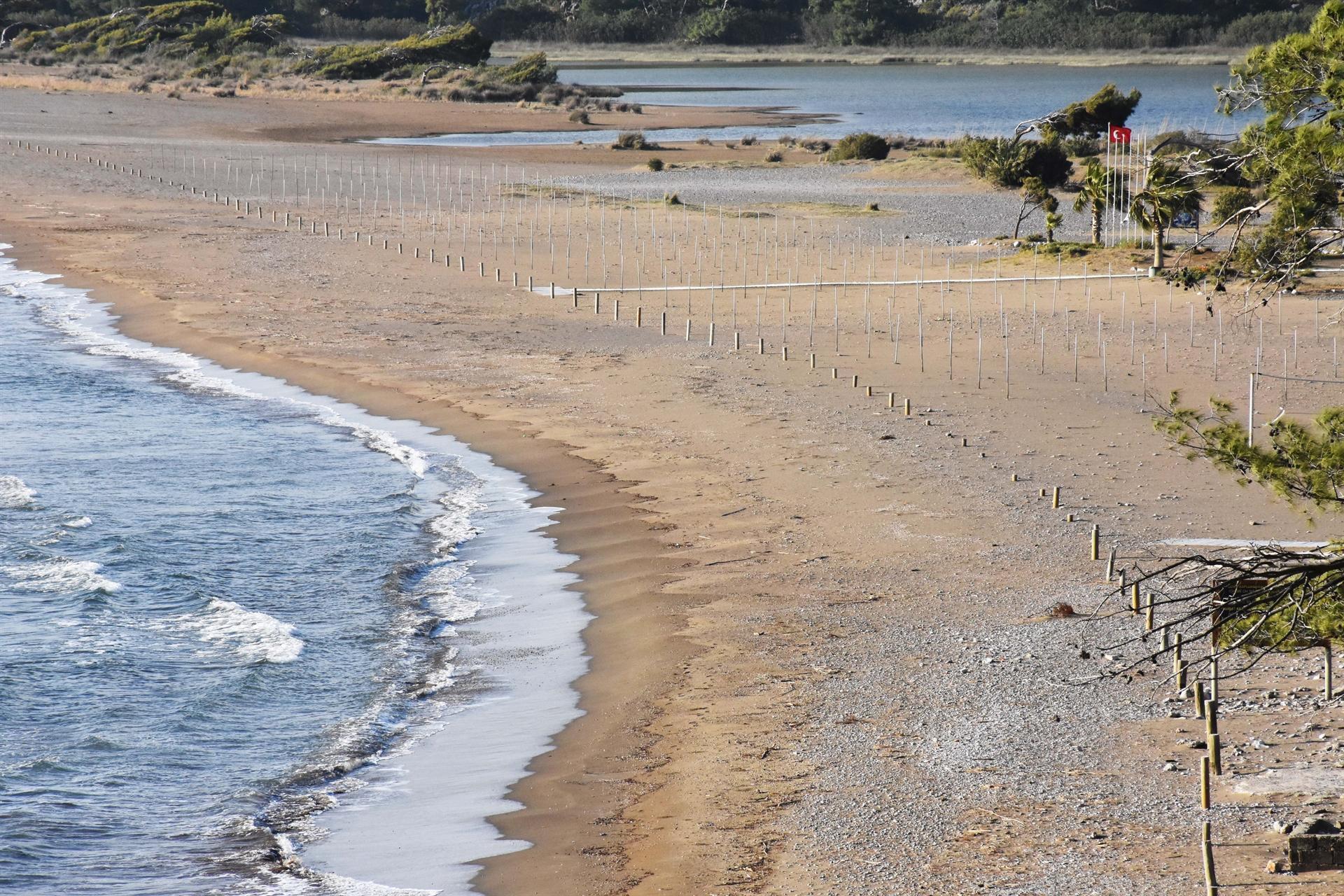
The world-famous İztuzu beach in the Ortaca district of Muğla is experiencing one of its quietest days ever due to the coronavirus lockdown, as its natural inhabitants, the Caretta caretta loggerhead sea turtles, are beginning to lay their eggs.
The endangered Caretta carettas began to lay their eggs in the pits with depths of 50-60 centimeters, which they dug at the İztuzu beach in Dalyan. The sea turtles will reach the sea in about 60 days.
Caretta carettas had a period of mating and nesting in a more comfortable environment this year at İztuzu Beach, which was closed to visitors within the scope of the COVID-19 measures.
Various precautions have been taken by the Sea Turtle Research Rescue and Rehabilitation Center (DEKAMER) in order to prevent the Caretta carettas from having problems during the spawning period. The officers of the center keep watch overnight on the beach. The spawning moments of Caretta carettas are also recorded.
Speaking to the state-run Anadolu Agency, Yakup Kaska, the president and project manager of DEKAMER, said that every year, with the support of the Environment and Urbanization Ministry’s Directorate General for Conservation of Natural Heritage, they work to protect and monitor the nests on the beach.
Kaska, who mentioned that the spawning period of Caretta carettas generally started in May, adding, “We detected the first nest on April 30. It happened a week later than last year. This can vary depending on the water temperatures in the region.”
Kaska stated that a female Caretta caretta can make three to five nests every two weeks, and the nesting lasts until August.
Noting that Dalyan is a very important beach in terms of its recognition with young turtles in Turkey and the world as well as the measures taken for their protection, Kaska said, “On the beach of Dalyan, we are getting the earliest nesting records in the entire Mediterranean in recent years. The hatchlings will continue from July to September. We protect the beach from the day the nesting begins until the end of September. Every nest on the İztuzu beach is caged. This prevents foxes or other harmful animals that could damage the nest. We are trying to send the highest number of Caretta carettas from the beach to the sea. In terms of nesting, Dalyan beach is shown in many places around the world.”
Kaska said that Caretta carettas usually come to the beach where they were born to nest. He stated that last year Caretta carettas made 650 nests on İztuzu beach and that approximately 35,000 cubs reached the sea from the nests, and they expected more than 600 nests in the region this year.